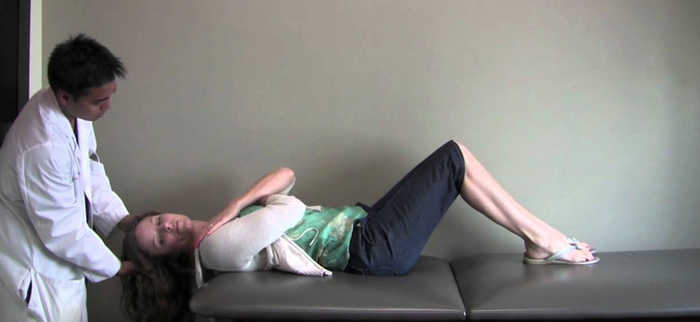Published 18:52 IST, November 17th 2024
Can These 3 Simple Tricks Parry Dizziness?
Check out these three moves that could help get you back on track and feeling steady.
- Health News
- 4 min read
Whether it’s the spinning sensation of vertigo or the unsettling feeling that you’re going to topple over, it’s hard to feel like you’re in control when the room is moving faster than you are. If you've ever experienced a sudden, intense attack of dizziness, you know just how annoying—and inconvenient—it can be. You might feel nauseous, sweaty, or like you're about to face-plant into the nearest wall. But don’t worry, there's good news! While vertigo may strike unexpectedly, there are a few simple exercises you can do on your own to relieve the dizziness—no doctor’s office required (for now, at least). Let's dive into three moves that could help get you back on track and feeling steady.

What is Vertigo?
First things first: let’s get clear on what vertigo actually is. It’s not just regular dizziness. Vertigo is a type of vestibular disorder that messes with your sense of balance. Think of it like your inner ear's GPS going haywire, causing you to feel as though you or the room around you is spinning or moving when it isn’t. It's not just an inconvenience—it can trigger nausea, vomiting, and an inability to stand up straight. Depending on what’s causing the vertigo, treatments vary, but one thing's for sure: if you can catch the dizziness early, some exercises might give you the relief you need.

Epley maneuver
If you’ve been struck by vertigo, particularly the kind caused by BPPV (Benign Paroxysmal Positional Vertigo), you might have heard about the Epley maneuver. This simple move helps to reposition the tiny crystals in your inner ear that have gone rogue and are throwing off your balance. And it works—studies show that up to 80% of people with BPPV report a significant improvement after doing this exercise.
Here’s how to do it: Sit at the edge of a bed and turn your head 45 degrees towards the side where you feel the dizziness (say, to the right).
Quickly lie back, keeping your head tilted at that 45-degree angle. Wait for at least 30 seconds or until the spinning stops.
Turn your head slowly by 90 degrees to the left, hold for 30 seconds.
Next, roll onto your left side so that your head is facing downward. Hold for another 30 seconds.
Finally, sit up slowly and stay seated for a few minutes.
The goal is to return those errant crystals to their rightful place in your inner ear, stopping the dizzying sensation.

Brandt-daroff exercises:
Sometimes, vertigo can come back repeatedly, leaving you feeling like you're caught in a loop of dizziness. That’s where Brandt-Daroff exercises come in. These exercises are designed to help your brain get used to the imbalance caused by vertigo, essentially “re-training” it to handle the feeling of spinning or instability. According to research, this technique is particularly effective for dealing with recurrent BPPV.
Here’s how to do it: Sit on the edge of your bed and tilt your head slightly upward.
Lie down quickly on one side (keeping your head tilted upward), and hold that position for 30 seconds or until the dizziness fades.
Return to sitting.
Immediately lie down on the opposite side, keeping your head tilted up again. Hold for 30 seconds.
Repeat the sequence 5 times on each side, 2-3 times a day.
Over time, these exercises help your brain adjust to the unbalanced signals it’s getting from the inner ear.

Gaze stabilisation exercises
When your balance is off, the world around you start to look a little less steady. But with gaze stabilization exercises, you can retrain your brain to focus and keep steady on a target, even while moving. These exercises are perfect for maintaining your balance as you go about your day.
Method: Find a stationary target—something as simple as a letter on the wall or a small object at eye level.
Focus on the target while sitting or standing up straight.
Slowly move your head side to side, keeping your eyes locked on the target. Move your head about 20-30 degrees left and right.
Then, do the same motion up and down.
Do this for 1-2 minutes, 3-4 times per day. Start slow, and as you get better, increase the speed.
As you practice, your brain will learn to handle the dizzying inputs, and your balance will improve.
Updated 18:52 IST, November 17th 2024